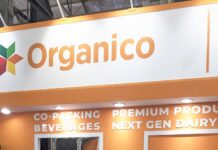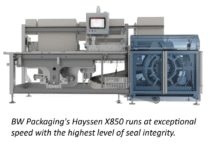At Wolf Plastics, the philosophy is to keep the eye firmly focused on the market, and always to continue developing. Thus, the company does not wish merely to produce containers that can be filled, but also to satisfy highly individual needs with those containers. Taking a look behind the scenes at its latest product development shows how collaboration between producers, customers, and suppliers can have amazing results.
At first glance, the task appeared quite simple – it entailed developing an innovative range of robust, perfectly-shaped buckets for construction products, and putting them on the market in record time. However, they were not talking about just any 08/15 bucket, but a model that could ‘perform any role.’
How it all started
Oliver Baumgärtel, the key account and product manager at Wolf Plastics, explains the collaborative aspect of the new injection-molded bucket as follows – “At the preparatory phase of this project, we integrated the customer’s ideas with the know-how of our production unit. The client’s ideas proved so useful at this planning stage because they showed the way to meeting all the requirements of the new product. We knew just what the new container had to be able to do and working together with our partners, and we achieved exactly that. Such close collaboration with customers and partners is ‘state of the art’ at Wolf Plastics, and helps hugely in delivering results.”
Production without disruption
Efficiency is always a priority throughout the process. Disruption to production could hardly be tolerated. “We know it’s not a simple matter for all our customers to make changes to their production lines,” Wolf Plastics CEO Georg Hirsch points out. “Changes that will have an impact on product-filling lines are always tricky since any adjustments would be likely to have far-reaching consequences.”
Their top priority when developing the product was the efficient use of space. Wolf Plastics’ research and development department was called in at this stage. It came up with a novel oval shape that would make optimal use of storage and transport space. In so doing, the bucket became both wider and lower to allow the required stackability and stability. Thanks to the new shape, it becomes feasible to stack containers in four tiers, which in turn produces a useful much-reduced stack volume per pallet. The economies in pallet usage this achieves make it possible to reduce storage volumes in a cost-efficient way.
Elegant and robust
An additional requirement was total robustness. When designing this container, above all, they were talking about a bucket that would see service on building-sites day in, day out, and which had to have a high capacity. Yet, at the same time, it had to look attractive. And that’s where Verstraete IML came on board for in-mold-labeling.
Wolf Plastics had to come up with a new design that would cause minimum disruption to production lines, and it found in Verstraete IML. “We looked at the market and found that Verstraete IML was the market leader, offering excellent products and a high standard of technical support,” says Manfred Dolotow, supply chain Manager at Wolf Plastics.
The benefits of IML
Sustainable development is of great importance to Verstraete IML, which seeks to minimize impact on the environment. Its core business, the labeling of designs, clearly contributes to protecting the environment since the packaging and label are both made from the same material. The result is mono-packaging that’s fully recyclable, and which allows the longest possible working life of the raw materials used.
Verstraete IML pays special attention to improving the functionality of the final packaging in developing innovations. In this way, it’s possible to prolong the shelf life of the packed merchandise, for example, by incorporating oxygen or light blockers into labels.
Since building materials are advertisements for producers, they need to be, and to remain, visually appealing. IML printing ensures images of brilliant color quality. Furthermore, it requires only a single label to wrap every side of the packaging, with a perfect fit from top to bottom and right around. In-mold labels are resistant to damp, extreme temperatures or scratching, so they’re the ideal solution for intensively-used containers. With IML procedures, the packaging is produced and labeled in a single operation. By doing away with the storage of blank over-packaging, storage and transport processes are improved.
A partner that delivers
Catherine Van Rie at Verstraete IML notes the speed and efficiency supplying the new Wolf Plastics product line. “We received the preliminary draft design in March 2019 and the first production order at the same time. We managed to produce the prepress swiftly and to send the print templates to Wolf Plastics for approval. We were then able to supply labels to customers extremely quickly.”
The customer decided to put the first 300,000 buckets with the IML label on the market, initially on its premium product line, to get some initial response from end customers. The feedback from customers and the market were very favorable. The stackability, robustness, handling, and appearance were all considered plus-points in everyday use. Customers were also enthusiastic about the saving in logistics costs. By virtue of their 4-tier stackability, they saved 25% on pallets, with an extremely positive impact on average volumes purchased.
The next step was production for the trade line on a much-expanded scale, producing many times the initial numbers of buckets. All three Wolf Plastics locations are now working successfully with this new product line. Thus, the ‘Oval Bucket’ really has arrived on the market.
This successful collaboration, and the development of the ‘Oval Bucket’ is extremely gratifying and acts as a spur to pursue other similar projects. Market demands are always changing; development always continues. Wolf Plastics has resolved to keep up-to-speed or – better still – to keep one step ahead in matters of innovation, sustainability, and recycling.
IndiFoodBev — authentic, impactful and influential
An English-language food and beverage processing and packaging industry B2B platform in print and web, IndiFoodBev is in its third year of publication. It is said that the Indian food and beverage industries represent approximately US$ 900 billion in revenues which implies more than 20% of the country’s GDP. Eliminating the wastage on the farmside can help to deliver more protein to a higher number of the population apart from generating sizable exports. The savings in soil, seeds, water, fertilizer, energy and ultimately food and nutrition could be the most immense contribution that country is poised to make to the moderation of climate change.
To improve your marketing and grow sales to the food and beverage processing and packaging industry, talk to us. Our research and consulting company IppStar [www.ippstar.org] can assess your potential and addressable markets in light of the competition. We can discuss marketing, communication, and sales strategies for market entry and growth.
Suppliers and service providers with a strategy and budget for targeted marketing can discuss using our hybrid print, web, video, and social media channels to create brand recognition linked to market relevance. Our technical writers are ready to meet you and your customers for content.
The second largest producer of fruit and vegetables in the world is continuously expanding processing capacities and delivery systems with appropriate innovative technologies. We cover product and consumer trends, nutrition, processing, research, equipment and packaging from farm to thali. Get our 2025 media kit and recalibrate your role in this dynamic market. Enhance your visibility and relevance to existing markets and turn potential customers into conversations. Ask for a sample copy of our bi-monthly in print or our weekly IndiFoodBev eZine each Wednesday.
For editorial info@ippgroup.in — for advertisement ads1@ippgroup.in and for subscriptions subscription@ippgroup.in
Naresh Khanna – 10 February 2025
Subscribe Now












